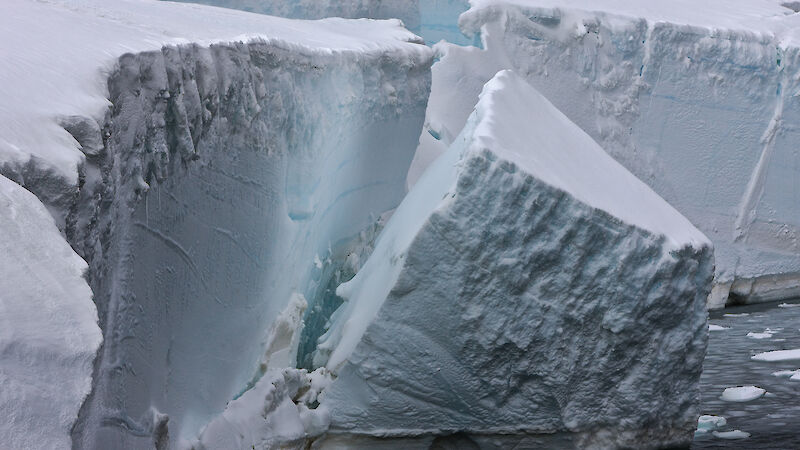A number of scientific research projects conducted in Antarctica focus on particular species or ecosystems that can act as early warning systems for environmental change as a result of human activities. Due to their significant appetite for krill, Adélie penguins, for example, have played a major role in helping scientists develop a system to monitor the potential impacts of the Southern Ocean krill fishery for almost 20 years. More recently, this research has revealed the close relationship between the sea ice environment and the birds’ breeding success and survival, which also makes them a potentially useful ‘indicator’ of the impacts of climate change, before more widespread effects unfold.
Such indicator species provide important information for conservation and management in Antarctica and elsewhere. Their study also provides a window of opportunity to initiate management measures that help protect other species or ecosystems from the consequences of human activities, or to manage or reduce the impacts on them.
This issue of the Australian Antarctic Magazine looks at some of the different ways species or ecosystems can be used to help understand and manage human impacts on a number of scales. This includes an environmental assessment of the sewage outfall at Australia’s Davis station. Various biological, physico-chemical and ecotoxicological studies on microbial communities and invertebrates such as worms, crustaceans and algae, will help scientists determine the effect, if any, of sewage on the environment and inform the installation of an effective replacement wastewater treatment system for the station.
Taking a slightly different tack, scientists are building up a picture of the relationships between organisms’ life history characteristics (e.g. reproduction and life span) and their environment, to predict whether they are vulnerable to bottom fishing in the Southern Ocean. Maps of geophysical features, ocean depth and currents are also being used to predict the location of environments likely to support vulnerable organisms. Through the Commission for the Conservation of Antarctic Marine Living Resources (CCAMLR), the work is helping to safeguard these 'vulnerable marine ecosystems' by preventing fishing in susceptible areas until appropriate management actions are established.
To avoid a repeat of past mistakes, scientists are conducting detailed scientific research on the biology, distribution and movement of Patagonian toothfish to ensure a sustainable fishery in Australia’s Exclusive Economic Zone. As well as enabling CCAMLR to set sustainable catch limits for the fishery, the work is revealing some interesting facts about this mysterious monster of the deep.
This issue also focuses on some of the new technology making Antarctic work and life easier. Casey and Davis stations are undergoing significant infrastructure improvements, with energy efficiency and flexibility critical requirements. Antarctic doctors are also benefiting from a new three-dimensional ultrasound machine, while a new reverse osmosis plant is allowing Davis expeditioners to enjoy an experience most people take for granted — daily showers.
Finally, we celebrate the achievements of two talented and dedicated individuals; Antarctic Medal winner David Pullinger, whose work as a helicopter pilot has supported scientific research in Antarctica for 20 years; and Eureka Prize winner and mathematician, Dr Ian Ball, whose Marxan software is contributing to marine and land conservation planning around the world.
Enjoy your reading.
WENDY PYPER
Editor

